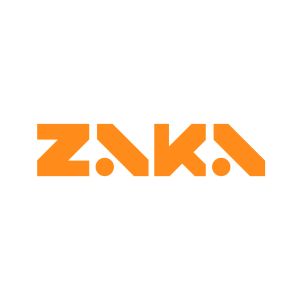Hello, and welcome to our series of blogs dedicated to helping you navigate the world of hiring in AI. I’m Jean-Pierre Fakhry, the Lead AI Engineer at ZAKA, where we’re passionate about AI Education, Consultation, and Development, as well as fostering a thriving community of AI enthusiasts.
This is the first blog in our series, and we’re starting at the foundation – internships. Internships are often the first step into the AI industry, and we’ll be focusing on how to secure them in fields like Machine Learning, Natural Language Processing, Large Language Models, Computer Vision, and Data Science. Our goal is to provide you with practical tips, insights into common technical questions, and strategies for tackling real-world use case scenarios to help you land that dream internship.
From here, we’ll continue our journey through more advanced topics, working our way up the hiring ladder. So stay tuned for more insights and tips on building your career in AI. Let’s get started on this journey together!
The AI industry is rapidly expanding, and landing an internship in this field can be your gateway to a successful career in AI. Whether you’re interested in Machine Learning (ML), Natural Language Processing (NLP), Computer Vision (CV), Large Language Models (LLMs), or Data Science, internships are an excellent way to gain hands-on experience, build your network, and lay the foundation for your career.
1. Preparing for an AI Internship
Before diving into the technical aspects, it’s essential to prepare yourself holistically for the internship application process.
a. Building a Solid Foundation
– Technical Skills
To secure an internship in AI, it’s crucial to have a strong understanding of the core concepts in your area of interest, foundational knowledge is key:
- NLP and LLMs: Dive deep into deep learning, natural language processing, transformers, and relevant Python libraries like TensorFlow, PyTorch, and Hugging Face.
- CV: Concentrate on image processing techniques, convolutional neural networks (CNNs), and libraries like OpenCV and Keras.
- AI Engineers: Ensure you have a strong grasp of software engineering principles, cloud platforms, and AI model deployment.
- Data Science: Focus on statistics, data manipulation, and mastering tools like Pandas, NumPy, and Scikit-learn.
b. Projects and Portfolios
Showcase your knowledge through personal or academic projects. Create a portfolio that demonstrates your ability to apply theory to practice. Whether it’s a GitHub repository of your code or a blog explaining your projects, having tangible proof of your skills is crucial for catching the eye of potential employers.
c. Networking and Industry Engagement
Networking is an essential part of finding internship opportunities:
- LinkedIn: Optimize your LinkedIn profile by highlighting your skills, projects, and relevant experiences. Connect with professionals in your field and participate in discussions related to AI.
- Online Communities: Join AI and Data Science communities on platforms like Kaggle, GitHub, or specialized forums. Engaging with these communities can help you stay updated on industry trends and might even open doors to internship opportunities.
- AI Conferences and Meetups: Attend conferences, webinars, and meetups, either in-person or virtually.
2. Common Technical Interview Questions
Technical interviews for AI internships often include a mix of theoretical questions, coding challenges, and problem-solving scenarios. Below are common questions you might encounter for each field:
a. Machine Learning / Natural Language Processing (NLP) / Large Language Models (LLM)
- Explain the difference between supervised and unsupervised learning.
- What is the purpose of regularization in machine learning models?
- Describe how transformers work in NLP.
- How would you fine-tune a pre-trained LLM like GPT or BERT?
- What are some techniques to handle imbalanced datasets?
b. Machine Learning / Computer Vision (CV)
- Explain the architecture of a Convolutional Neural Network (CNN).
- How do you handle overfitting in computer vision tasks?
- What are the common techniques for image augmentation?
- Explain the difference between classification, detection and segmentation.
- Describe the process of object detection and the role of algorithms like YOLO or SSD.
- How would you preprocess an image dataset for a deep learning model?

c. AI Engineer
- How would you deploy a machine learning model in production?
- Explain the concept of microservices and how they relate to AI deployment.
- What are the challenges in scaling AI models, and how would you address them?
- How do you ensure the security and privacy of AI systems in production?
- Describe your experience with cloud platforms like AWS, GCP, or Azure in the context of AI deployment.
d. Data Science
- What is the difference between a Type I and Type II error?
- How do you handle missing data in a dataset?
- Explain the concept of cross-validation and its importance in model evaluation.
- How would you approach feature selection in a high-dimensional dataset?
- Describe a time when you used data visualization to communicate insights effectively.
3. Use Case Scenario: Tackling Real-World Problems
A significant part of AI internship interviews involves solving use case scenarios. These questions test your ability to apply theoretical knowledge to real-world problems. Let’s go through a common example:
Scenario: Improving Customer Satisfaction with NLP
Imagine you’re working for a company that wants to improve customer satisfaction by analyzing customer feedback. You are tasked with developing an NLP-based solution to automatically categorize feedback as positive, negative, or neutral and identify key areas for improvement.

Steps to Tackle the Use Case:
- Understanding the Problem: Start by clarifying the problem statement. What are the specific goals of the project? What kind of data is available?
- Data Collection and Preprocessing: Discuss the process of collecting and preprocessing textual data. Mention techniques like tokenization, stop word removal, and stemming/lemmatization.
- Model Selection: Explain your choice of model. For this task, a fine-tuned LLM or a traditional machine learning model like an SVM with TF-IDF features might be appropriate.
- Training and Evaluation: Describe how you would train the model and evaluate its performance using metrics like accuracy, F1 score, or confusion matrix.
- Deployment and Feedback: Finally, touch on how you would deploy the model in production and monitor its performance over time, making adjustments based on user feedback.
Key Tips:
- Think Aloud: During the interview, verbalize your thought process to demonstrate your problem-solving skills.
- Be Methodical: Break down the problem into smaller, manageable steps. This shows your ability to approach complex challenges logically.
- Stay Flexible: Be ready to discuss alternative approaches or pivot your solution if the interviewer challenges your initial plan.
Conclusion
Securing an internship in AI requires a combination of technical expertise, industry knowledge, and strong problem-solving abilities. By preparing thoroughly, understanding the common interview questions, and mastering the art of tackling use case scenarios, you can increase your chances of landing that coveted internship. Remember, each interview is not just an assessment but also an opportunity to learn and grow as an aspiring AI professional.


